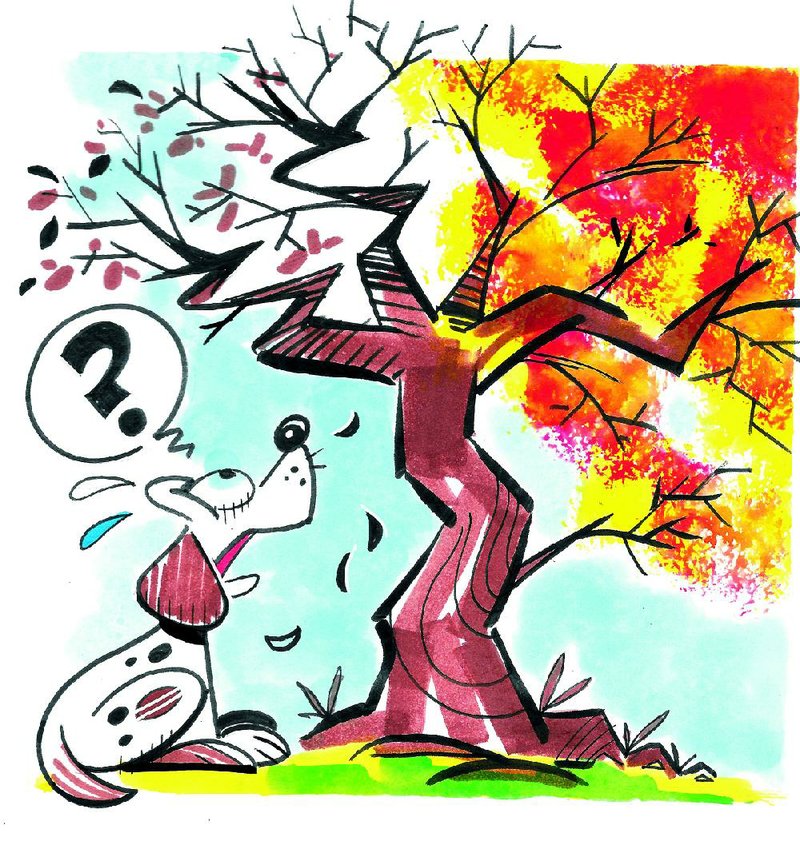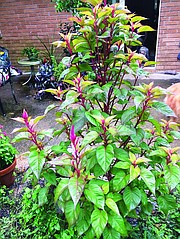Q We have a mature dogwood tree that has dead limbs. When is the best time of the year to trim the dead wood? We also have several oaks that I trim every two years to get the "suckers" off the first 30 feet of trunk. They keep coming back. When should I trim?
A If you are sure you have dead branches, remove them as soon as you see them. Sometimes trees shed leaves early and you can't be 100 percent sure what is dead and what is dormant simply by looking. Suckers or sprouts on oak trees can occur if a tree is stressed. It is the tree's way of trying to grow a new branch. If you don't want them, cut them when you see them.
Q We have 27 ligustrum shrubs and two ligustrum trees. They have been afflicted with black spot for a few years now. We have tried Neem oil and hired a professional service to spray these plants to no avail. They keep losing leaves. The shrubs surround our wrap-around porch/deck, and they are so thin you can see through them. They range in height from 4 to 6 feet and have spread width-wise to form a hedge. The trees in the front yard have a rounded topiary shape, and they are 10 to 12 feet tall and sculpted to form trees. We cannot afford to replace 27 shrubs and, especially, to replace the two trees as they were quite expensive. Can pruning them down to a height of 3 feet and starting the treatment over help? Also, I have read that if you don't clean your hedge trimmers, they can re-infect shrubs and potentially spread diseases to other shrubs. Is that true? I read that pouring rubbing alcohol on the trimmer blades can kill the diseases on trimmers.
A I believe your wax leaf ligustrums are suffering from a disease called Cercospera leaf spot. It can be difficult to reverse. For this winter, rake up any leaves that have fallen from the plants and destroy them. In late February, cut your plants back and remove all debris. Keep in mind that rapid new growth can occur with severe pruning, and this new growth can be more susceptible to the disease. Spray with a systemic fungicide such as Fertilome F-Stop, Immunox or Bayer Advanced Disease Control for Roses, Flowers & Shrubs. Follow the spray schedule on the label. You can mechanically transmit the disease from shrub to shrub with your pruners. Cleaning the tool between bushes is helpful, but if you have electric trimmers, use caution with anything liquid. Bleach solutions or alcohol can help on regular pruners. Make sure when you are done trimming that you clean the pruners and lightly oil them before storing, as any bleach solution will cause corrosion over time.
Q I wonder if you can help identify this plant. [The reader sent a photo.] I think it is related to some coxcomb plants I had in this area during summer 2017. This plant came up about five weeks ago and has reached about 5 feet, and a few parts look like coxcomb plants. Is it likely a seed from a plant that was a few inches tall would produce this, or is it something totally different? Should I keep this plant's roots in the ground for future seasons?
A The plant in question is a variety of celosia, which is commonly called cockscomb. There are many new varieties out there. These are annual flowers, but they can reseed themselves. I am surprised it took them this long to sprout. Enjoy it for now -- until a frost. I would consider shaking out some of the flower heads to save seeds and sow them in warm soil next spring. Celosia plants do root quite easily but would not thrive indoors in the winter.
Janet B. Carson is a horticulture specialist for the University of Arkansas Cooperative Extension Service. Write to her at 2301 S. University Ave., Little Rock, Ark. 72204 or email her at
HomeStyle on 11/10/2018


